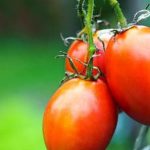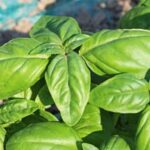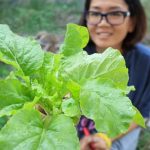Are you interested in starting your own vegetable garden? Whether you are a seasoned gardener or a beginner, there are numerous benefits to growing your own vegetables. From having access to fresh, organic produce to the sense of pride that comes with nurturing your own plants, gardening can be a rewarding and enjoyable experience. In this article, we will provide you with valuable tips and insights for successfully planting and growing your own vegetables at home.
One of the most important steps in starting a vegetable garden is selecting the right vegetables to grow. Factors such as climate, available space, and personal preferences should be considered when choosing which vegetables to plant. Once you have selected the vegetables you want to grow, preparing the soil for planting is crucial. Understanding the ideal planting time and proper planting techniques can greatly impact the success of your vegetable garden.
In addition to providing you with practical advice on selecting the right vegetables and preparing the soil for planting, we will also cover topics such as watering and mulching techniques, protecting your garden from pests and diseases, as well as harvesting and storing your homegrown vegetables. With our comprehensive guide, you will be well-equipped to start your own vegetable garden and enjoy a bountiful harvest of fresh produce. Keep reading for expert tips on how to get started.
Selecting the Right Vegetables for Your Garden
When it comes to selecting the right vegetables for your garden, there are a few important factors to consider. Not all vegetables thrive in every type of climate or soil, so it’s essential to choose varieties that are well-suited to your specific growing conditions. Here are some tips for selecting the best vegetables for your garden:
- Consider Your Climate: Before choosing which vegetables to plant, take into account the climate of your region. Some vegetables, such as tomatoes and peppers, prefer warmer temperatures, while others like broccoli and lettuce can tolerate cooler weather.
- Assess Your Soil: Different types of vegetables have varying soil requirements. For example, root crops like carrots and radishes need loose, well-draining soil, while leafy greens like spinach and lettuce thrive in rich, fertile soil.
- Think About Your Space: If you have limited space in your garden, opt for compact or bush varieties of vegetables that won’t take up too much room. Alternatively, if you have ample space, you may be able to grow sprawling veggies like pumpkins or melons.
By carefully considering these factors and researching the specific needs of different vegetable varieties, you can ensure that you select the right vegetables for your garden. Additionally, don’t be afraid to experiment with new or unusual vegetables – you may discover a new favorite that thrives in your garden’s environment. With the proper research and planning ,you can create a bountiful and diverse vegetable garden that will provide fresh produce throughout the growing season.
Tips for Proper Planting and Spacing
Once you’ve selected the right vegetables for your garden, it’s crucial to plant them properly to ensure their success. Proper planting techniques can make a significant difference in the growth and yield of your vegetables. Here are some essential tips for proper planting and spacing:
- Follow Seed Packet Instructions: Each type of vegetable has its own specific planting requirements regarding depth and spacing. Always refer to the instructions on the seed packets or plants you purchase to ensure they are planted at the correct depth and distance from one another.
- Plant at the Right Time: Different vegetables have different ideal planting times based on their tolerance to cold or heat. Be sure to plant each vegetable at the appropriate time according to your local climate.
- Maintain Proper Spacing: Overcrowding plants can lead to stunted growth and decreased production. Provide each vegetable with enough space based on its mature size by following spacing recommendations provided on seed packets or plant labels.
By following these tips for proper planting and spacing, you can give your vegetable garden a strong start and maximize its potential for a bountiful harvest.
Preparing the Soil for Planting
Testing and Amending the Soil
Before planting your vegetables, it’s important to test the soil in your garden to ensure it has the right pH level and nutrient content for healthy plant growth. You can purchase a soil test kit at your local gardening center or have a professional test the soil for you. Based on the results, you may need to amend the soil with organic matter such as compost, well-rotted manure, or peat moss to improve its texture and fertility.
Removing Weeds and Debris
One key step in preparing the soil for planting is to remove any weeds, rocks, or debris that could hinder plant growth. Weeds compete with your vegetable plants for nutrients and moisture, so it’s essential to clear them out before planting. Take the time to thoroughly weed the area and remove any unwanted vegetation. Additionally, clearing away rocks and debris will create a clean and fertile environment for your vegetable garden.
Proper Tilling Techniques
Once the soil has been tested, amended, and cleared of weeds and debris, it’s time to till the earth. Tilling helps loosen compacted soil, improves drainage, and creates an ideal seedbed for planting. Use a garden tiller or hand tools to break up clumps of soil and create a smooth surface for sowing seeds or transplanting seedlings. Be careful not to over-till the soil, as this can disrupt beneficial soil organisms and affect plant root systems.
Preparing the soil for planting is a crucial step in establishing a successful vegetable garden. By taking the time to test and amend the soil, remove weeds and debris, and properly till the earth, you’ll create an optimal growing environment for your homegrown vegetables. Keep these gardening tips for planting vegetables in mind as you prepare your garden beds for a bountiful harvest of fresh produce.
Understanding the Ideal Planting Time
When it comes to planting vegetables, timing is essential. Planting at the right time ensures that your vegetables have the best chance of thriving and producing a bountiful harvest. Understanding the ideal planting time for different vegetables can vary based on your specific location and climate, so it’s important to do some research or consult with local gardening experts to determine the best timing for your area.
Planting Cool-Season Vegetables
Cool-season vegetables such as lettuce, spinach, kale, and broccoli thrive in cooler temperatures and can be planted as soon as the soil can be worked in early spring. These vegetables can also be planted again in late summer for a fall harvest. It’s crucial to get these crops in the ground early enough so they have time to mature before the heat of summer sets in.
Planting Warm-Season Vegetables
Warm-season vegetables like tomatoes, peppers, cucumbers, and zucchini require warmer soil and air temperatures to thrive. These vegetables should not be planted until all danger of frost has passed and the soil has warmed up sufficiently. For most areas, this means waiting until late spring or early summer before planting these crops in your vegetable garden.
By understanding the ideal planting time for different types of vegetables, you can set yourself up for a successful gardening season. Taking into account your local climate and seasonal variations will help ensure that your plants have the best conditions for growth and productivity. When you plant at the right time, you give your vegetable garden a head start towards a successful harvest.
Tips for Proper Planting and Spacing
When it comes to planting vegetables in your garden, proper planting and spacing are crucial for the success of your crops. Following gardening tips for planting vegetables can help ensure that your plants have enough space to grow and thrive, leading to a bountiful harvest. Here are some tips for proper planting and spacing in your vegetable garden.
First, it is important to follow the spacing guidelines for each type of vegetable you plan to plant. Overcrowding can lead to competition for resources like sunlight, water, and nutrients, which can stunt the growth of your plants. Be sure to read the seed packets or plant labels for recommended spacing requirements and follow them accordingly.
When planting your vegetables, it’s also essential to consider their mature size. Some plants may start small but will require more space as they grow. Keep this in mind when planning the layout of your garden beds to prevent overcrowding later on. Additionally, consider using techniques such as companion planting, which involves growing compatible crops together to maximize space and boost yields.
Lastly, proper planting depth is crucial for the health of your vegetable plants. Planting too shallowly can lead to weak root systems, while planting too deeply can suffocate the roots.
Be sure to follow specific planting instructions for each type of vegetable you are growing and provide adequate space between seeds or transplants in order to achieve optimal results. By following these tips for proper planting and spacing, you can set your vegetable garden up for success and enjoy a plentiful harvest later on.
Overall, taking the time to plan out proper plant placement and spacing in your vegetable garden will contribute significantly to the overall health and productivity of your crops. Remember that different vegetables have different requirements regarding space and ideal companionship; be sure to do thorough research before you plant.
Watering and Mulching Techniques for Vegetable Gardens
When it comes to growing a successful vegetable garden, proper watering and mulching techniques are essential for the health and productivity of your plants. Here are some tips to ensure that your vegetables thrive in the garden:
- Watering Techniques: It’s important to water your vegetable garden consistently, especially during dry periods. Most vegetables require about 1-2 inches of water per week, either from rainfall or irrigation. To avoid water stress, water deeply and less frequently rather than shallow, frequent watering. This encourages deep root growth and helps the plants become more drought-resistant.
- Mulching Benefits: Mulching is a key practice in vegetable gardening as it helps retain soil moisture, suppresses weeds, and maintains even soil temperature. Organic mulches such as straw, wood chips, or compost can also improve soil structure as they decompose, providing valuable nutrients to the plants. Apply a 2-3 inch layer of mulch around your vegetables, making sure to keep it away from the plant stems to prevent rotting.
In addition to these techniques, here are some additional considerations for watering and mulching in vegetable gardens:
- Drip Irrigation: Consider using a drip irrigation system for efficient water delivery directly to the root zones of your plants, reducing water waste and minimizing weed growth.
- Monitoring Soil Moisture: Check the moisture level of the soil regularly by inserting your finger into the soil near the plants. If it feels dry an inch below the surface, it’s time to water.
- Weed Control: Mulching not only conserves moisture but also aids in suppressing weed growth. Weeds compete with vegetables for water and nutrients, so keeping them at bay through mulching can benefit your garden immensely.
By implementing proper watering and mulching techniques in your vegetable garden, you can promote healthy plant growth while minimizing maintenance efforts. These practices contribute to higher yields and overall success in growing your own vegetables at home.
Protecting Your Vegetable Garden From Pests and Diseases
Maintaining a healthy vegetable garden involves more than just choosing the right plants and providing proper care. Protecting your garden from pests and diseases is crucial to ensure a bountiful harvest. One effective way to keep pests at bay is by practicing crop rotation, which involves planting different types of vegetables in different areas of your garden each season.
This helps prevent the build-up of pests that are specific to certain crops. Additionally, using row covers and hand-picking pests off your plants can also help control and minimize infestations.
In addition to pests, diseases can also wreak havoc on your vegetable garden if left unchecked. To prevent common fungal diseases such as powdery mildew and blight, it’s essential to water the soil directly and avoid getting the foliage wet. Proper spacing between plants is also important as it allows for better air circulation, reducing the likelihood of disease development. Furthermore, applying organic fungicides or using natural remedies like neem oil can help protect your plants from various diseases.
Taking proactive measures to protect your vegetable garden from pests and diseases will not only save you time and effort but will also contribute to a successful growing season.
| Vegetable Garden Protection Methods | Benefits |
|---|---|
| Crop Rotation | Prevents build-up of specific pests |
| Row Covers and Hand-picking Pests | Controls pest infestations |
| Proper Watering Techniques | Prevents fungal diseases |
| Air Circulation through Plant Spacing | Reduces likelihood of disease development |
Harvesting and Storing Your Homegrown Vegetables
After all your hard work in planting and tending to your vegetable garden, it’s time to reap the rewards of a bountiful harvest. But knowing when and how to harvest your vegetables is crucial in ensuring that they are at their peak flavor and nutritional content.
When it comes to harvesting, timing is everything. Different vegetables have different indicators for when they’re ready to be picked – from the size and color of the fruit to the firmness of the flesh. For example, tomatoes should be harvested when they are fully colored and slightly soft to the touch, while leafy greens should be picked when they reach a certain size but before they start to bolt or turn bitter.
Once you’ve harvested your vegetables, proper storage is essential for prolonging their freshness and flavor. Some vegetables like carrots and beets can be stored in a cool, dark place for several weeks, while others like cucumbers and peppers are best enjoyed fresh. Understanding the ideal storage conditions for each type of vegetable can help you make the most out of your homegrown produce.
| Vegetable | Ideal Harvest Time |
|---|---|
| Tomatoes | Fully colored and slightly soft to the touch |
| Carrots | Harvested once they reach desired size |
| Cucumbers | Best enjoyed fresh after harvesting |
In addition to proper harvesting and storing techniques, remember that some vegetables can actually improve in flavor after a light frost. These “cool weather” crops like kale and Brussels sprouts may even taste sweeter after being exposed to colder temperatures. By understanding these nuances, you can ensure that you enjoy the freshest and most flavorful produce from your garden all year round.
Conclusion
In conclusion, growing your own vegetables can bring a multitude of benefits to both your health and well-being. Not only does it provide you with a constant supply of fresh, organic produce, but it also offers a sense of satisfaction and accomplishment. By following the gardening tips for planting vegetables outlined in this article, you can create a thriving vegetable garden that will reward you with an abundant harvest.
Selecting the right vegetables for your garden is the first step towards a successful harvest. Understanding the ideal planting time, proper planting and spacing techniques, as well as watering and mulching methods are essential for the growth and development of your vegetable plants. Additionally, learning how to protect your garden from pests and diseases is crucial in ensuring a bountiful harvest.
Beyond the tangible rewards of homegrown vegetables, there is also an intangible joy that comes from watching your garden flourish and enjoying the fruits of your labor. Whether you have a small backyard or just a few pots on a balcony, anyone can experience the satisfaction that comes from growing their own food.
So why not give it a try? With dedication and these gardening tips for planting vegetables, you’ll soon be reaping the delicious rewards of your very own vegetable garden.
Frequently Asked Questions
How Do I Prepare My Garden for Planting Vegetables?
To prepare your garden for planting vegetables, start by clearing the area of any debris and weeds. Test the soil to determine its pH levels and nutrient content. Then, amend the soil with organic matter such as compost or manure to improve its texture and fertility.
How Do You Successfully Plant Vegetables?
Successful vegetable planting starts by choosing the right location with plenty of sunlight and good drainage. When planting seeds or seedlings, follow the spacing recommendations on the seed packets or plant tags to allow for proper growth. Water the plants consistently and monitor for any pests or diseases.
What Is the Best Way to Layout a Vegetable Garden?
The best way to layout a vegetable garden is to consider the space needed for each plant and group them accordingly. Plan out your garden in rows or sections, making sure to rotate crops each year to prevent depletion of nutrients in the soil.
Additionally, consider incorporating trellises or support structures for climbing plants and pathways for easy access and maintenance.

If you’re looking to get into vegetable gardening, or are just looking for some tips on how to make your current garden better, then you’ve come to the right place! My name is Ethel and I have been gardening for years. In this blog, I’m going to share with you some of my best tips on how to create a successful vegetable garden.





